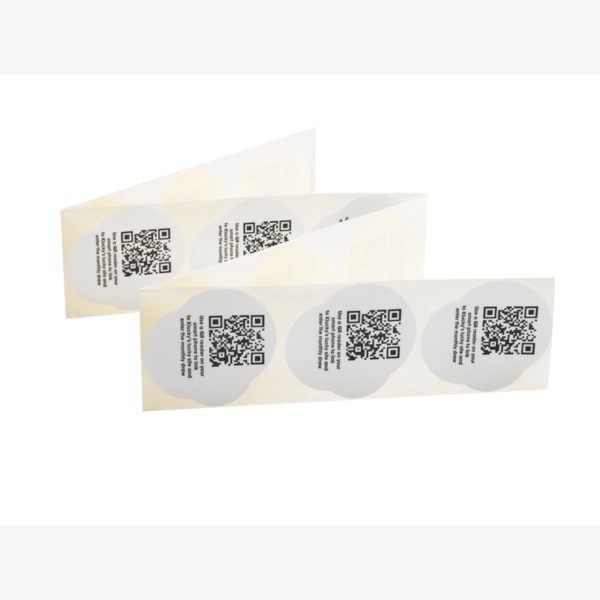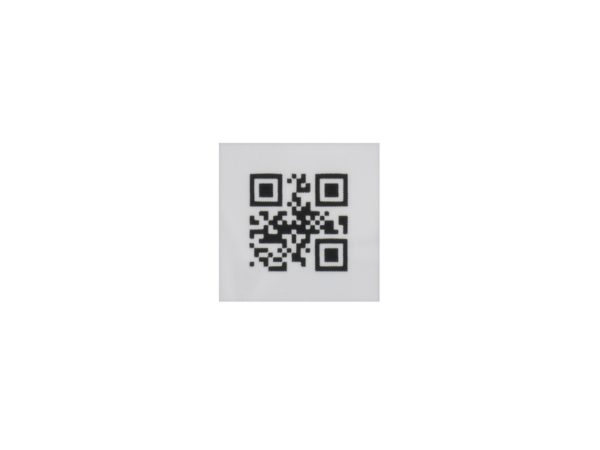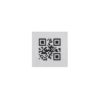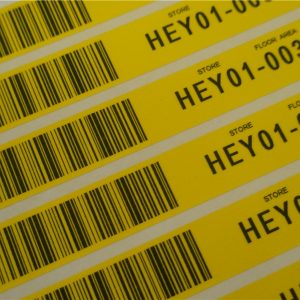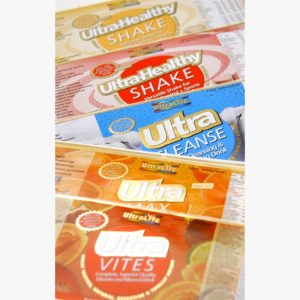QR Coded Labels
Home / Full Product Range / Full Product Range / QR Coded Labels
A QR code (short for Quick Response) is a specific two-dimensional barcode, readable by dedicated QR barcode readers and camera phones. The code consists of black modules arranged in a square pattern on a white background. The information encoded can be text, URL or other data. Users with a camera phone equipped with the correct reader application can scan the image of the QR code to display text, contact information, connect to a wireless network, or open a web page in the phone’s browser. Many manufacturers are incorporating QR Codes onto their labels as a direct link to websites and promotional microsites. Some marketeers believe these will ultimately replace many on pack promotions. To generate your own QR code please follow the link below: http://qrcode.kaywa.com/
QR coded labels FAQs
Our QR coded labels function as two-dimensional barcodes containing encoded information like text, URLs, or any data. When scanned using a QR barcode reader or smartphone camera, the QR code’s pattern is interpreted. This interpretation enables users to access the encoded information.
QR codes provide a convenient way for consumers to interact with products. They can access a product’s relevant content or services, like product details, website links, contact information, or promotions, by simply scanning the code with their phone’s camera.
QR codes differ from traditional barcodes in several ways. Firstly, QR codes contain data in two dimensions, while barcodes are linear. This means QR codes can store much more information, including URLs, text, and contact details, compared to the limited data capacity of barcodes.
Additionally, QR codes can be scanned using just smartphone cameras, making them more accessible to customers. QR codes can also link directly to online content, such as websites or promotional microsites, providing interactive experiences beyond the physical product. Overall, QR codes bring way more opportunities and enhanced functionality compared to traditional barcodes.
We primarily utilise thermal transfer printing for QR code labels. This method ensures the durability and longevity of the labels, especially in environments where exposure to heat, moisture, or abrasion is a concern. Thermal transfer printing allows for high-quality, precise printing of QR codes on various label materials, ensuring optimal scanability and readability.
Additionally, it offers flexibility in terms of label customisation and variable data printing, meeting diverse labelling requirements efficiently. Hence, our standard practice is to use thermal transfer printing. However, if you’re seeking direct thermal printing, we can accommodate that as well.
The QR codes on our labels can encode various types of information, including website URLs, product details, contact information, instructions, promotions, and more. We understand that this versatility allows for bespoke communication with consumers.
Whether you aim to direct users to a specific webpage, offer promotional discounts, or convey any other information, our QR codes are customisable to meet your needs. We are fully equipped to create QR designs that are bespoke to your requirements.
No, there are no extra charges for QR code origination. At Labelservice, we provide QR code origination free of charge as part of our service. Whether you require one QR code or multiple codes for different products, you can rest assured that there are no hidden fees associated with QR code origination.
Our aim is to provide you with a seamless and affordable solution for integrating QR codes into your label design strategy.
Yes, we do have in-house digital printing facilities for printing QR labels. Our advanced technologies assure high-quality printing with precise production of QR codes and seamless integration onto your labels.
With our digital printing capabilities, we also offer flexibility in customising QR labels to your specific requirements. If you’re looking for personalised QR code service, we’re your one-stop solution. With our efficient in-house facilities, we can handle high-volume QR coded label printing while assuring timely delivery.
The answer is NO. Most modern smartphones come with built-in QR code scanning functionality in their camera apps. Users can simply open their camera app, point it at the QR code, and a notification will appear to access the encoded information.
So, no special software is typically required to scan QR codes. Besides, there are a plethora of free QR code scanner apps available for download on app stores for users with older devices. Honestly, scanning QR codes is a hassle-free process accessible to anyone with a smartphone.
Yes, we have the capability to customise QR codes to align with your branding and design preferences. When you choose Labelservice, you have bespoke QR code solutions that allow you to incorporate your brand colours, logo, and design elements seamlessly into the QR code image.
This customisation ensures that the QR codes on your labels not only provide valuable information but also enhance brand recognition and consistency across your packaging. Our team is dedicated to helping you create QR codes that perfectly complement your overall branding strategy and effectively communicate with your target audience.
Ensuring the durability of QR codes on labels begins with selecting the right materials. Our QR code labels are crafted from a range of robust materials specifically engineered for durability in diverse environments. We utilise synthetic materials like polyester and polypropylene, known for their excellent resistance to moisture, abrasion, and tearing.
Additionally, high-quality paper with durable finishes, vinyl, and thermal transfer labels are also utilized to ensure longevity. These materials are chosen to withstand outdoor exposure and indoor wear and tear, maintaining the integrity of the QR codes for consistent scanning performance.
Yes, QR codes on labels can indeed track and analyse consumer engagement and scan activity. By utilising QR code analytics platforms, businesses can gain valuable insights into how often their QR codes are scanned, the demographics of users, geographic distribution, and even the time of day or location of scans.
This data helps companies understand consumer behaviour, measure the effectiveness of marketing campaigns, and tailor future strategies to better engage their target audience. In essence, QR codes offer a dynamic tool for businesses to gather actionable data and optimise their marketing efforts based on real-time insights.
A QR code (short for Quick Response) is a specific two-dimensional barcode, readable by dedicated QR barcode readers and camera phones. The code consists of black modules arranged in a square pattern on a white background. The information encoded can be text, URL or other data. Users with a camera phone equipped with the correct reader application can scan the image of the QR code to display text, contact information, connect to a wireless network, or open a web page in the phone’s browser. Many manufacturers are incorporating QR Codes onto their labels as a direct link to websites and promotional microsites. Some marketeers believe these will ultimately replace many on pack promotions. To generate your own QR code please follow the link below: http://qrcode.kaywa.com/
QR coded labels FAQs
Our QR coded labels function as two-dimensional barcodes containing encoded information like text, URLs, or any data. When scanned using a QR barcode reader or smartphone camera, the QR code’s pattern is interpreted. This interpretation enables users to access the encoded information.
QR codes provide a convenient way for consumers to interact with products. They can access a product’s relevant content or services, like product details, website links, contact information, or promotions, by simply scanning the code with their phone’s camera.
QR codes differ from traditional barcodes in several ways. Firstly, QR codes contain data in two dimensions, while barcodes are linear. This means QR codes can store much more information, including URLs, text, and contact details, compared to the limited data capacity of barcodes.
Additionally, QR codes can be scanned using just smartphone cameras, making them more accessible to customers. QR codes can also link directly to online content, such as websites or promotional microsites, providing interactive experiences beyond the physical product. Overall, QR codes bring way more opportunities and enhanced functionality compared to traditional barcodes.
We primarily utilise thermal transfer printing for QR code labels. This method ensures the durability and longevity of the labels, especially in environments where exposure to heat, moisture, or abrasion is a concern. Thermal transfer printing allows for high-quality, precise printing of QR codes on various label materials, ensuring optimal scanability and readability.
Additionally, it offers flexibility in terms of label customisation and variable data printing, meeting diverse labelling requirements efficiently. Hence, our standard practice is to use thermal transfer printing. However, if you’re seeking direct thermal printing, we can accommodate that as well.
The QR codes on our labels can encode various types of information, including website URLs, product details, contact information, instructions, promotions, and more. We understand that this versatility allows for bespoke communication with consumers.
Whether you aim to direct users to a specific webpage, offer promotional discounts, or convey any other information, our QR codes are customisable to meet your needs. We are fully equipped to create QR designs that are bespoke to your requirements.
No, there are no extra charges for QR code origination. At Labelservice, we provide QR code origination free of charge as part of our service. Whether you require one QR code or multiple codes for different products, you can rest assured that there are no hidden fees associated with QR code origination.
Our aim is to provide you with a seamless and affordable solution for integrating QR codes into your label design strategy.
Yes, we do have in-house digital printing facilities for printing QR labels. Our advanced technologies assure high-quality printing with precise production of QR codes and seamless integration onto your labels.
With our digital printing capabilities, we also offer flexibility in customising QR labels to your specific requirements. If you’re looking for personalised QR code service, we’re your one-stop solution. With our efficient in-house facilities, we can handle high-volume QR coded label printing while assuring timely delivery.
The answer is NO. Most modern smartphones come with built-in QR code scanning functionality in their camera apps. Users can simply open their camera app, point it at the QR code, and a notification will appear to access the encoded information.
So, no special software is typically required to scan QR codes. Besides, there are a plethora of free QR code scanner apps available for download on app stores for users with older devices. Honestly, scanning QR codes is a hassle-free process accessible to anyone with a smartphone.
Yes, we have the capability to customise QR codes to align with your branding and design preferences. When you choose Labelservice, you have bespoke QR code solutions that allow you to incorporate your brand colours, logo, and design elements seamlessly into the QR code image.
This customisation ensures that the QR codes on your labels not only provide valuable information but also enhance brand recognition and consistency across your packaging. Our team is dedicated to helping you create QR codes that perfectly complement your overall branding strategy and effectively communicate with your target audience.
Ensuring the durability of QR codes on labels begins with selecting the right materials. Our QR code labels are crafted from a range of robust materials specifically engineered for durability in diverse environments. We utilise synthetic materials like polyester and polypropylene, known for their excellent resistance to moisture, abrasion, and tearing.
Additionally, high-quality paper with durable finishes, vinyl, and thermal transfer labels are also utilized to ensure longevity. These materials are chosen to withstand outdoor exposure and indoor wear and tear, maintaining the integrity of the QR codes for consistent scanning performance.
Yes, QR codes on labels can indeed track and analyse consumer engagement and scan activity. By utilising QR code analytics platforms, businesses can gain valuable insights into how often their QR codes are scanned, the demographics of users, geographic distribution, and even the time of day or location of scans.
This data helps companies understand consumer behaviour, measure the effectiveness of marketing campaigns, and tailor future strategies to better engage their target audience. In essence, QR codes offer a dynamic tool for businesses to gather actionable data and optimise their marketing efforts based on real-time insights.


